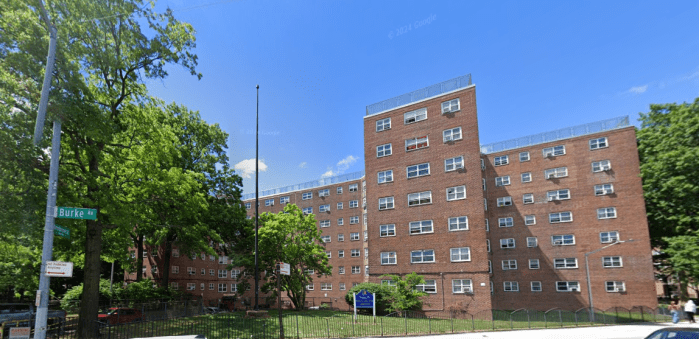
The denizens of Little Syria brought the Middle East’s entrepreneurial spirit to their Lower Manhattan enclave, as businessmen (above) or smaller-scale merchants (below right).

BY YANNIC RACK |
When Linda Jacobs’s grandparents first set foot in New York City after their long trip from Syria in the late 19th century, they didn’t have to walk far to feel like they never left home.
Coming ashore in Lower Manhattan, they landed right in the middle of the vibrant Arab community now known as “Little Syria.”
“They got off the boat and walked 25 steps, and there was a Syrian colony with all these stores, restaurants, people speaking Arabic,” said Jacobs, a scholar of Near Eastern Archaeology and Anthropology who just published a book on the community, “Strangers in the West: The Syrian Colony of New York City, 1880-1900.”
Started in the 1880s, the enclave stretched from the Battery to Albany St. and from the Hudson River to Greenwich St. Nobody used the term “Little Syria” in the 19th century, and most of the immigrants were in fact from present-day Lebanon, Israel, Palestine, and Jordan as well as Syria. By the 1940s, the community had largely disappeared, pushed out by the construction of the Brooklyn Battery Tunnel.
“Everyone always expects it was so exotic, people wearing fez hats and smoking shishas [hookas] … but I think the main thing is that it was a very enterprising, vibrant area,” said Todd Fine, co-founder of the Washington Street Historical Society.
For the past few years, Fine and a small group of fellow preservationists have pushed to landmark two buildings on Washington St. that they say are the last remnants of the once-flourishing community.
“You had this little area that was one of the most diverse in American history, yet the Lower East Side gets so much more recognition and preservation,” Fine said.

Preservationists want to protect some of the last buildings from that era on Washington St.
Supported by the Friends of the Lower West Side, Fine has repeatedly written to the city’s Landmarks Preservation Commission to request a formal hearing on the former Downtown Community House at 105-107 Washington St. and a five-story tenement at 109 Washington St., sitting side-by-side on a block between Rector and Carlisle Sts. But the commission shot down all his requests, arguing that the buildings are not significant enough to receive individual protection, and too few to warrant a historic district.
The L.P.C. also notes that the Downtown Community House, which has sat empty since 2009, was only built in 1925, at which point the population of Little Syria had been in decline for several years, with many of its inhabitants relocating to Brooklyn.
But the commission is missing the point, according to Fine.
“I feel that in Downtown, history is not a priority,” he said. “There’s gotta be something that will forever allow people to understand that this was once a neighborhood.”
After Hurricane Sandy, Fine’s group adopted a small park at the intersection of Trinity Place and Greenwich Street, where bench plaques now recall the area’s Arabic history.
A third building on the Washington St. block, the former St. George’s Syrian Catholic Church at 103 Washington St., was landmarked in 2009.
But back when the surrounding streets were still cobble-stoned, Little Syria had a very different atmosphere.
“When the new immigrant walked up Washington Street, he would have heard Arabic on every side,” Jacobs writes in her book. “Many of the storefronts had signs in Arabic in the windows; there were men smoking water pipes in the cafés; and many of the men and women walking through the streets looked much as they did at home, not-withstanding their westernized clothing.”
Today, the tenement at 109 Washington St. is still occupied. Esther Regelson, who has lived in the building for the past 30 years, said that it is important to keep the memory of Little Syria alive — especially with anti-immigrant sentiment on the rise, as reflected in a recent Siena College poll showing that 52 percent of registered voters in New York State are against allowing Syrian refugees to come to the United States.
“When you erase those buildings you have no idea of your place in history, and in a vibrant city that was built on the backs of those that came here before us,” Regelson said. “You take that snapshot of the neighborhood away, and it’s gone for good.”





































